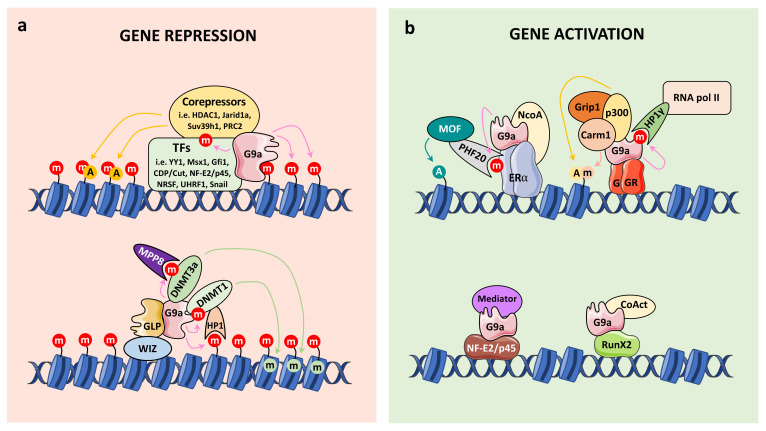Figure 3.
G9a acts as a transcriptional coregulator, either as a corepressor (a) or coactivator (b). (a) After G9a recruitment by some transcription factors (TFs), G9a methylates histones (red circles) leading to chromatin remodeling and gene repression. G9a also recruits corepressor proteins (i.e., other PKMTs and chromatin remodelers) and DNA methyltransferases (i.e., DNMT3a and DNMT1) in order to fully repress transcription via histone modifications (i.e., acetylation (orange circles) and DNA methylation (green circles)). Of note, G9a also methylates some TFs and DNA methyltransferases modulating their functions. (b) Conversely, G9a recruitment by the glucocorticoid receptor (GR), estrogen receptor (ERα), RunX2 and NF-E2/p45 leads to gene activation through the recruitment of specific coactivators (CoAct) (i.e., histone acetyltransferases and methyltransferases) and the transcription machinery (i.e., Mediator complex or RNA polymerase II).

